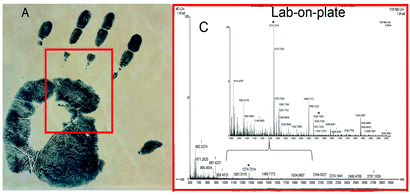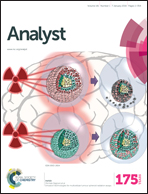A proteomic approach for the rapid, multi-informative and reliable identification of blood†
Abstract
Blood evidence is frequently encountered at the scene of violent crimes and can provide valuable intelligence in the forensic investigation of serious offences. Because many of the current enhancement methods used by crime scene investigators are presumptive, the visualisation of blood is not always reliable nor does it bear additional information. In the work presented here, two methods employing a shotgun bottom up proteomic approach for the detection of blood are reported; the developed protocols employ both an in solution digestion method and a recently proposed procedure involving immobilization of trypsin on hydrophobin Vmh2 coated MALDI sample plate. The methods are complementary as whilst one yields more identifiable proteins (as biomolecular signatures), the other is extremely rapid (5 minutes). Additionally, data demonstrate the opportunity to discriminate blood provenance even when two different blood sources are present in a mixture. This approach is also suitable for old bloodstains which had been previously chemically enhanced, as experiments conducted on a 9-year-old bloodstain deposited on a ceramic tile demonstrate.


 Please wait while we load your content...
Please wait while we load your content...